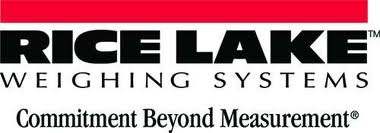I was recently called out to a customers because their hopper scale kept filling after the filling auger was turned off. I performed a thorough inspection and couldn’t find anything mechanically wrong with the scale. I had the customer run through the batching process so that I could observe the problem from the customer’s perspective. I watched the indicator slowly fill the hopper and after the filling equipment turned off, the scale slowly and erratically added an additional 200 to 300 pounds to the batch. I then went out and watched the batching equipment fill the hopper. As I watched, I saw the boot on the left slowly start to suck in until it was displacing only half the volume it had when the batch started. Somehow or another the boot was being put under vacuum and the boot was pulling on the scale. When the batch was done the boot slowly relaxed and returned to normal. With the customer’s consent I put a pipe into the top of the boot to relieve the vacuum. We ran another batch and the problem went away. I told the customer to figure out where the vacuum was coming from and fix it, but the problem was fixed for now. Rubber boots can cause some weird and perplexing problems.
If you have a tank or hopper that is being filled with powder or something similar, you have seen boots. Boots can be made of many different materials from cotton fabric to silicone rubber. They often are the culprit in weighing issues on hoppers and tanks that had been working fine and all of a sudden aren’t. They are used when you have materials that need to be transferred into a hopper or tank but the material will cause a lot of dust or want to flow out of the filling aperture. Since hard piping to a scale is a no-no, boots were created to allow the scale to move freely but still confine the material being transferred.
All of the issues that will occur with boots come down to some kind of bind. Here are some of the problems that you will see:
1. Material builds up inside of the boot and bridges across the gap between the fill pipe and the pipe on the hopper.
2. The boot is installed without any give, or too tightly.
3. Material works its way between the receiving pipe and the boot.
4. The material sticks to the boot and hardens.
5. The boot stretches like a rubber band as the hopper fills and moves.
These issues all prevent the hopper from moving freely. Without free movement the scale will often not zero correctly or weigh non-linearly.
These problems can be very difficult to find and diagnose. A full inspection on tanks and hoppers is not complete without examining the boots and piping. When problems are found it is always best to have your customer clean, repair, or replace suspect piping and/or boots to prevent problems from developing.










